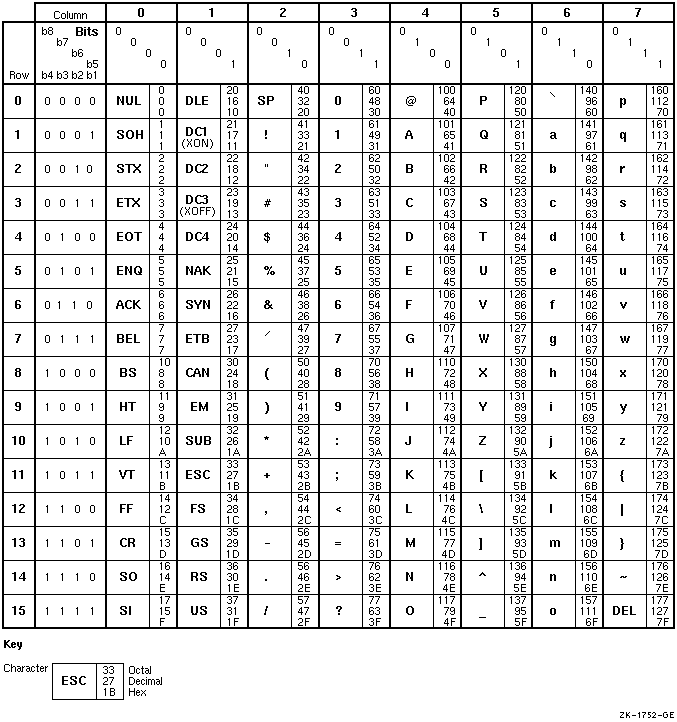Visible to Intel only — GUID: GUID-9E9D3E3F-05C2-4886-9DB8-0A021C0F6704
Visible to Intel only — GUID: GUID-9E9D3E3F-05C2-4886-9DB8-0A021C0F6704
ASCII Character Set for Linux* and macOS*
This topic describes the ASCII character set that is available on Linux* and macOS operating systems.
The ASCII character set contains characters with decimal values 0 through 127. The first half of each of the numbered columns identifies the character as you would enter it on a terminal or as you would see it on a printer. Except for SP and HT, the characters with names are nonprintable. In the figure, the characters with names are defined as follows:
NUL |
Null |
DC1 |
Device Control 1 (XON) |
SOH |
Start of Heading |
DC2 |
Device Control 2 |
STX |
Start of Text |
DC3 |
Device Control 1 (XOFF) |
ETX |
End of Text |
DC4 |
Device Control 4 |
EOT |
End of Transmission |
NAK |
Negative Acknowledge |
ENQ |
Enquiry |
SYN |
Synchronous Idle |
ACK |
Acknowledge |
ETB |
End of Transmission Block |
BEL |
Bell |
CAN |
Cancel |
BS |
Backspace |
EM |
End of Medium |
HT |
Horizontal Tab |
SUB |
Substitute |
LF |
Line Feed |
ESC |
Escape |
VT |
Vertical Tab |
FS |
File Separator |
FF |
Form Feed |
GS |
Group Separator |
CR |
Carriage Return |
RS |
Record Separator |
SO |
Shift Out |
US |
Unit Separator |
SI |
Shift In |
SP |
Space |
DLE |
Data Link Escape |
DEL |
Delete |
The remaining half of each column identifies the character by the binary value of the byte; the value is stated in three radixes—octal, decimal, and hexadecimal. For example, the uppercase letter A has, under ASCII conventions, a storage value of hexadecimal 41 (a bit configuration of 01000001), equivalent to 101 in octal notation and 65 in decimal notation.
The following is the ASCII Character Set for Linux and macOS.
